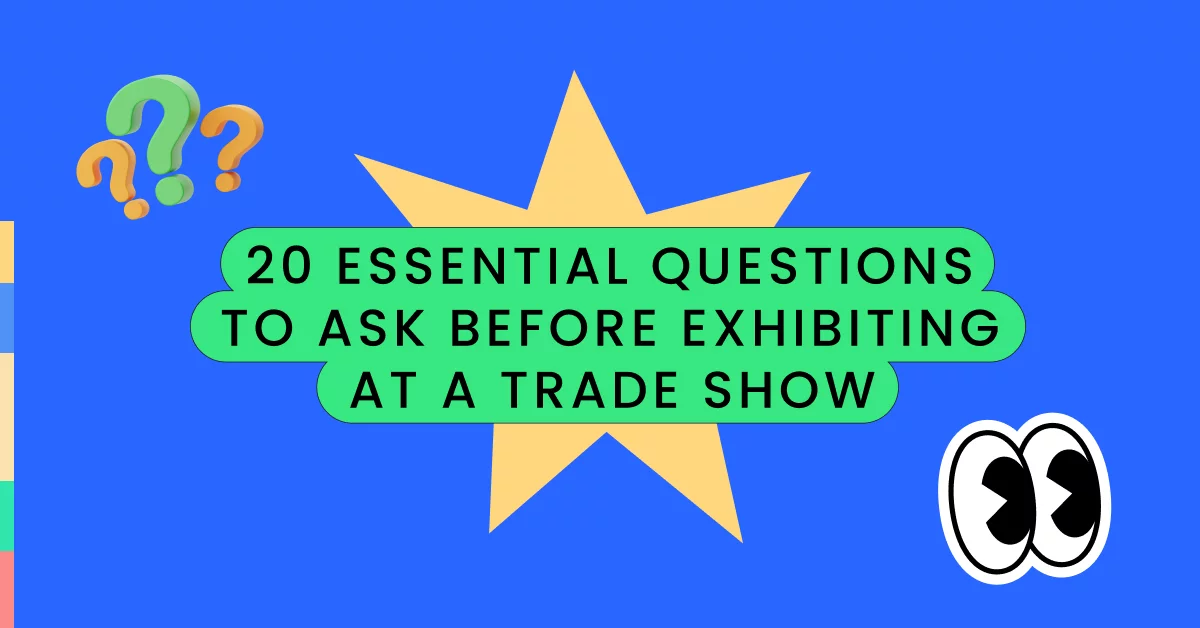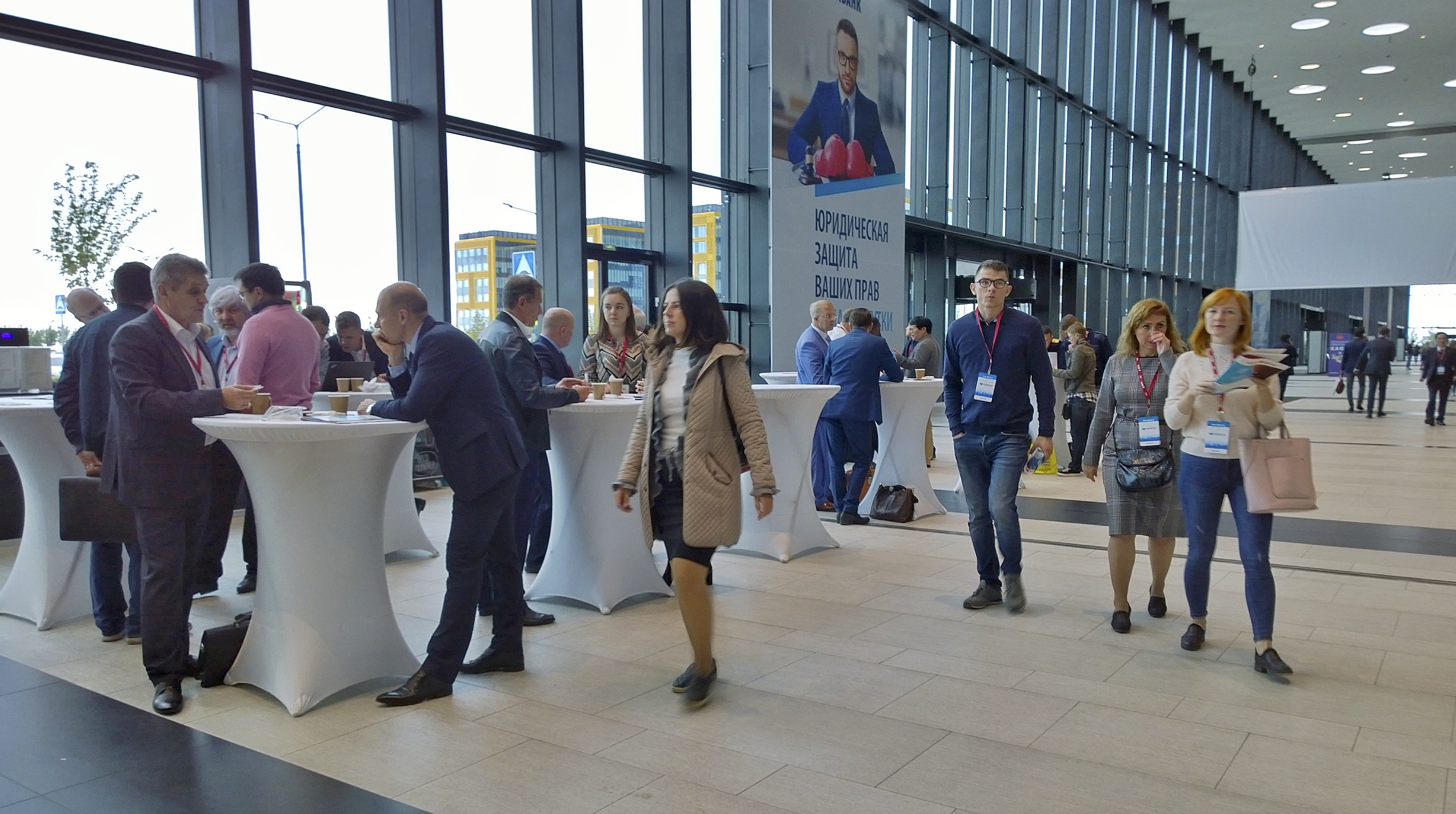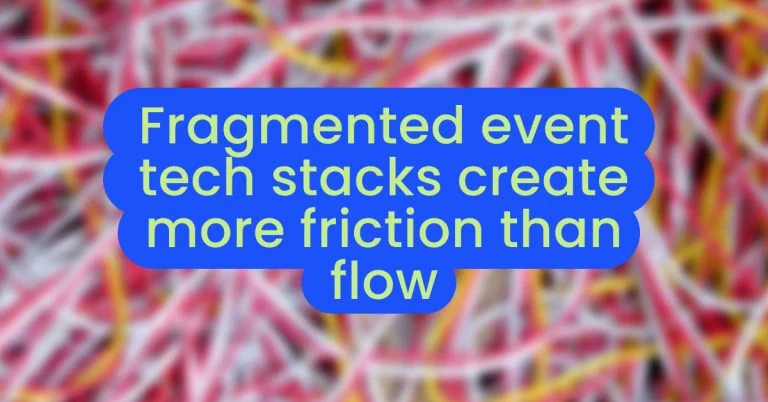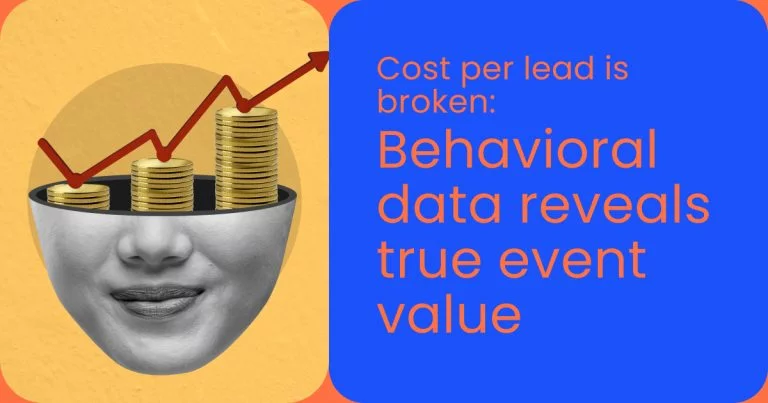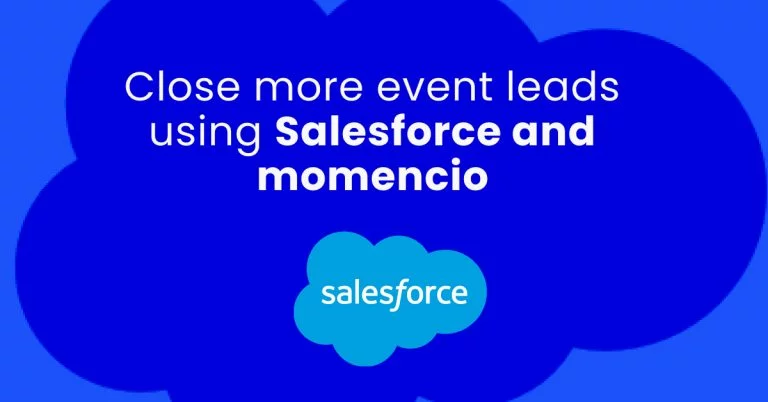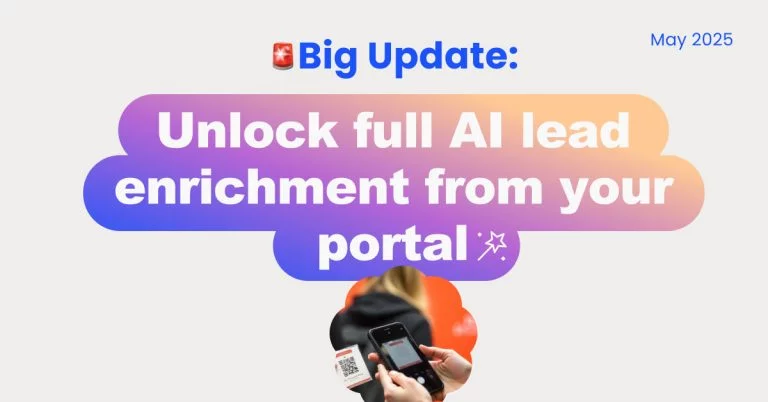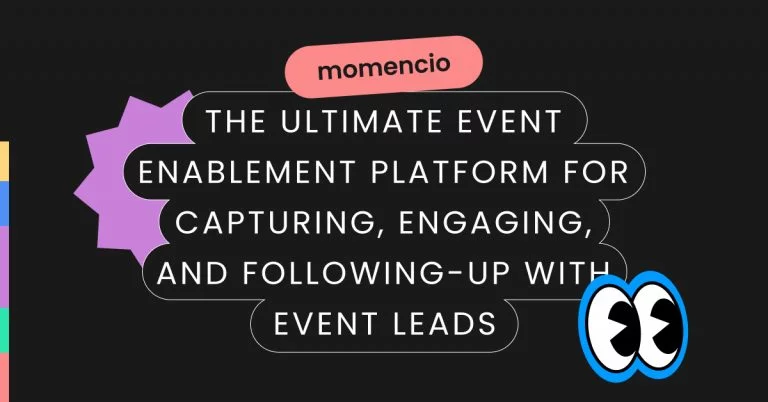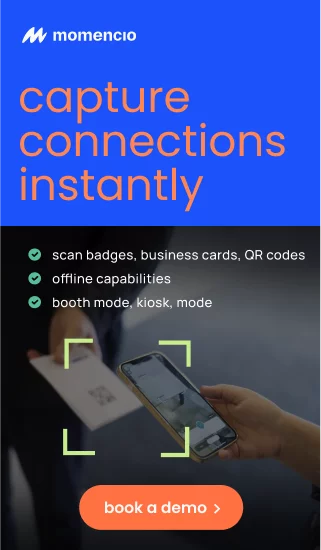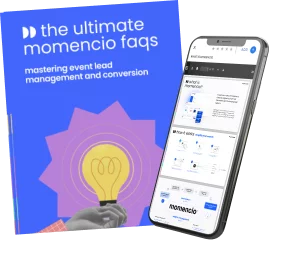20 Essential Questions to Ask Before Exhibiting at a Trade Show
When planning to exhibit at a trade show, the preparation you do before the event can be as critical as your actions during the event itself. A fundamental part of this preparation involves asking the right questions to ensure not just a successful exhibition but also a significant return on investment. According to the Center for Exhibition Industry Research, companies that strategically plan for trade shows enjoy higher ROI, with over 80% of exhibitors stating that trade shows play a critical role in their marketing mix. This article delves into the top 20 questions that are crucial for every exhibitor to consider. These inquiries will guide you through setting clear objectives, understanding your audience, effectively managing resources, and ultimately maximizing the impact of your trade show presence. Whether you’re a seasoned exhibitor or a first-timer, these questions will help you align your trade show efforts with broader business goals, enhancing both lead generation and customer engagement at every point.
Understanding Your Objectives
1. Why Are You Exhibiting?
Exhibiting at a trade show involves significant investment, not just financially but also in terms of time and resources. It’s essential to define clearly why you are participating. Are you looking to generate leads, increase brand awareness, launch a new product, or perhaps establish thought leadership within your industry? Each objective might dictate a different approach to how you design your booth, interact with attendees, and measure success. For instance, if lead generation is your primary goal, your focus might be on interactive demos or free trials. At the same time, for brand awareness, an eye-catching booth design that resonates with your brand’s message would be crucial.
2. What Are Your Goals?
Setting specific, measurable, achievable, relevant, and time-bound (SMART) goals is critical. Here are some examples:
- Generate 300 qualified leads: Define what qualifies as a lead. Is it a contact who has shown interest in a specific product or someone who has agreed to a follow-up call?
- Increase brand awareness among attendees by 20%: How will you measure this increase? Through pre and post-event surveys, social media engagement, or media coverage?
- Launch a new product and achieve a first-event sales target of $50,000: This requires coordination between your sales, marketing, and product teams to ensure the product is ready, the sales team is well-versed in its benefits, and marketing has created buzz before the event.
Metrics for Measuring Success Choosing the right metrics to measure the success of your trade show efforts is integral to understanding the effectiveness of your participation and planning for future events. Some valuable metrics might include:
- Lead conversion rates: What percentage of leads turn into customers?
- Cost per lead: How much did each lead cost, considering the overall cost of the event?
- Attendee interactions: How many people stopped by the booth, and how many engaged in meaningful conversations?
- Follow-up success rate: Post-event, how effective are your follow-up strategies in moving leads through the sales funnel?
Leveraging Technology for Better Outcomes
Event technology platforms like momencio can enhance your ability to meet these goals by streamlining lead capture and follow-up processes. With features such as real-time analytics and automated follow-ups, momencio ensures that every lead is recovered and that each follow-up is timely and personalized, significantly boosting your chances of converting contacts into clients.
Knowing Your Audience
3. Who Are the Attendees?
Understanding the demographics and psychographics of your audience is crucial to tailoring your trade show strategy. This includes knowing their industry, job roles, challenges, and what solutions they might be seeking. For example, if you are exhibiting at a technology trade show, your booth and presentations should resonate with tech-savvy professionals seeking cutting-edge solutions. Using pre-event data, such as attendee lists provided by the event organizers or past event analytics, can help you create a detailed profile of your expected audience.
4. How Will You Engage Them?
Once you know who will be attending, the next step is to determine the best ways to engage them. This involves more than just having attractive booth designs; it includes the activities, content, and interactions that will occur at your booth. Here are some strategies:
- Interactive Demos: For products that need to be experienced and appreciated, setting up interactive demos where attendees can touch, feel, or use your product can be very effective.
- Educational Sessions: Mini-seminars or scheduled presentations that address common industry challenges or introduce new ideas can attract attendees to your booth and establish your brand as a thought leader.
- Personalized Conversations: Train your booth staff to engage in meaningful conversations that address attendees’ specific needs. Utilizing a tool like momencio can aid your team in quickly accessing relevant information about the leads they interact with, ensuring that every conversation is personalized and productive.
Creating a Memorable Experience
The key to successful engagement is making your interaction memorable. Consider these ideas:
- Gamification: Incorporating game elements into your booth design or activities can increase engagement and make the experience fun and memorable. For example, a digital scavenger hunt leads participants through a series of questions about your products to win a prize.
- Virtual Reality (VR) Experiences: If your product or service is complex or can be demonstrated through a simulated environment, VR can provide a compelling interactive experience.
- High-Value Giveaways: Offering a high-value item as a giveaway can draw attendees to your booth. Make sure the giveaway is relevant to your brand or product, enhancing brand recall.
Gathering Feedback
Engaging with your audience also provides a valuable opportunity to gather feedback. Use interactive surveys or feedback stations at your booth to learn what attendees think of your product, their pain points, and their level of interest in your solutions. This feedback can be invaluable for refining your product and improving future marketing strategies.
Analyzing the Competition
5. Who Else Is Exhibiting?
Before you set foot on the trade show floor, it’s critical to have a clear understanding of which competitors will also be exhibiting. This knowledge is not just about knowing who they are but also about analyzing their strengths and weaknesses. You can gather this information from the event organizer’s website, where exhibitors are often listed, and from past events if they are regular participants. Additionally, subscribing to industry newsletters and attending pre-event networking events can provide insights into competitor activities and strategies.
6. What Can You Learn from Them?
Strategic Positioning
- Booth Location and Design: Observing where competitors are placed and how they design their booths can give you insights into their marketing strategies. For instance, a prime location often signifies a higher investment in the event. Analyze their booth’s design and layout to see how they plan to attract and engage attendees.
Marketing Tactics
- Promotional Materials: Collect any brochures, flyers, or digital content your competitors distribute. These materials can offer clues about their key messages, featured products, and new initiatives.
- Engagement Techniques: Pay attention to how they engage with the audience. Are they using technology like touch screens, virtual reality, or live demonstrations? How are they incorporating storytelling or gamification? These observations can inspire improvements in your approach.
Sales Approach
- Staff Interactions: Observe how their team interacts with booth visitors. Are they proactive or reactive? How are they qualifying leads? Understanding their approach to customer interaction can help you refine your team’s training and sales tactics.
- Special Offers: Note any special offers, discounts, or deals they are promoting at the event. These can indicate their strategies for immediate sales conversions and post-show follow-up plans.
Product Differentiation
- Unique Selling Propositions (USPs): Identify the USPs they are highlighting. How are these positioned against the needs of the audience? This will help you better articulate your own product’s benefits.
- Innovations and Features: Keep an eye out for any new products or features they are launching. This information is crucial for keeping your product development team informed and maintaining competitiveness in your industry.
Leveraging Insights for Competitive Advantage
Once you’ve gathered this data, use it to enhance your trade show strategy:
- Differentiate Your Messaging: Adjust your booth’s messaging to highlight how your products or services offer unique solutions that are better or different from what competitors offer.
- Innovate Engagement Strategies: If your competitors are using advanced engagement strategies, consider how you can introduce unique and possibly more engaging elements in your booth.
- Optimize Sales Tactics: Tailor your sales approach based on the strengths and weaknesses you’ve observed in your competitors’ interactions with attendees.
Understanding your competition is not about mimicking their strategies but about finding opportunities to outshine them. By thoroughly analyzing and understanding what others are doing, you can anticipate industry trends, adapt your approach, and position your brand as a leader in the space.
Booth Design and Location
7. Where Will Your Booth Be Located?
The location of your booth within the trade show layout plays a crucial role in how much traffic you’ll attract. Prime locations are usually at the entrance, near food and beverage areas, or along main walkways where foot traffic is highest. However, these spots often come at a premium cost. When selecting your booth’s location, consider the following:
- Visibility: Choose a spot that is easily visible from multiple angles and distances. Only be tucked away in corners or behind more extensive exhibits if there is a strategic reason to do so.
- Traffic Flow: Understand the floor plan and anticipate the flow of traffic. Locations near seminar rooms, lounges, or other attractions can benefit from the movement of attendees around these areas.
- Competitor Proximity: Being near your competitors can be advantageous if you have a strong differentiator; it allows direct comparison for attendees.
8. How Should It Be Designed to Attract Attendees?
Booth design is your chance to make a visual statement and create a welcoming environment for attendees. Here are key aspects to focus on:
Theme Consistency
- Ensure that the design of your booth aligns with your brand’s identity and message. Consistency in colors, logos, and themes helps reinforce your brand in the minds of attendees.
Functionality
- Design your space not just for visual appeal but for functionality. Consider how attendees will move through your booth. There should be a logical flow that leads them from initial engagement to deeper conversations or demonstrations.
- Include areas for different interactions, such as quick discussions at the front, more in-depth consultations in a quieter part of the booth, and spaces for live demonstrations or presentations.
Engagement Points
- Create multiple engagement points to capture the attention of different visitor types. This can include digital displays, interactive screens, product demonstration areas, or even lounge areas for more in-depth discussions.
- Technology can play a significant role here. Tools like augmented reality (AR) or touchscreens can provide interactive experiences that draw attendees into your booth.
Lighting and Graphics
- Use lighting strategically to highlight critical areas or products in your booth. Good lighting can make your space more inviting and can also be used to create an atmosphere.
- Invest in high-quality graphics and signage. Clear, eye-catching signs can help communicate your key messages quickly and attract more visitors from afar.
- Consider incorporating sustainable materials and practices into your booth design. This not only appeals to environmentally conscious attendees but can also be part of your brand’s commitment to sustainability.
Maximizing Impact with Strategic Design Choices
In addition to these physical elements, ensure your booth staff are well-prepared and embody the brand’s values and message. They should be approachable, knowledgeable, and ready to engage with attendees at any moment.
Furthermore, integrating platforms like momencio can enhance the functionality of your booth by providing seamless lead capture and follow-up solutions, ensuring that every interaction is tracked and optimized for post-show engagement.
Budgeting and Resources
9. What is Your Budget for the Event?
Determining your budget for the trade show is one of the first and most critical steps in your planning process. This will dictate many of your decisions, from the size and location of your booth to the type and amount of marketing materials and staffing levels. Here’s how to set a realistic budget:
- Booth Space Rental: This is typically the most significant expense. Costs will vary based on the size of the space and its location within the venue.
- Booth Design and Construction: Depending on whether you’re using a custom build, renting, or bringing a pre-designed booth, costs can vary widely. Include storage and transportation costs if applicable.
- Travel and Accommodations: Budget for airfare, hotels, and daily expenses for each staff member. Booking early can often secure better rates.
- Marketing Materials and Promotional Items: From brochures to giveaways, ensure you allocate enough funds to cover all materials that will make your booth stand out and be memorable.
- Technology Rentals: If you’re incorporating technology like tablets, screens, or interactive elements, consider the rental costs.
- Additional Services: Cleaning, electricity, internet, and other utilities at the booth might have separate charges not included in the booth rental fee.
10. How Will You Allocate Resources?
Once the budget is set, allocating your resources effectively is critical to maximizing your trade show ROI. Consider these strategies:
- Prioritize High-Impact Activities: Allocate more budget to high-impact activities that directly contribute to your primary objectives, such as lead capture and customer engagement.
- DIY Where Possible: Save costs by handling some tasks in-house, like creating marketing materials or managing social media promotions, instead of outsourcing.
- Staffing: Decide how many people are needed to run the booth without overcrowding it effectively. This includes sales staff, product experts, and possibly marketing or executive staff.
- Invest in Quality Over Quantity: It may be tempting to cut costs by opting for cheaper materials or giveaways. However, investing in high-quality items can significantly enhance brand perception and attendee interaction.
Leveraging Tools for Efficiency
To ensure no opportunity is missed, and every interaction is maximized, consider employing advanced tools:
- Lead Management Tools: Platforms like momencio not only help capture leads efficiently through badge scanning and business card capture but also enable immediate follow-up actions, enhancing the lead nurturing process right from the show floor.
- Analytics Tools: Utilize tools that can track booth performance in real time, providing insights on foot traffic, engagement levels, and staff performance. This data can help make quick adjustments during the show and provide valuable learnings for future events.
Preparing for Unexpected Costs
Always set aside a portion of your budget for unexpected expenses. Whether it’s last-minute print jobs, additional technology needs, or emergency booth repairs, having a contingency fund can be a lifesaver.
Promotional Strategies
11. What Marketing Materials Will You Need?
Crafting suitable marketing materials is crucial for creating a solid brand presence and effectively communicating your value proposition at the trade show. These materials should not only attract attention but also provide meaningful information that encourages further engagement. Here are some essential types of marketing materials to consider:
- Brochures and Flyers: These should highlight key product features and benefits and include a call to action. Make sure they are visually appealing and aligned with your brand’s identity.
- Business Cards: Ensure your team has enough business cards that include all necessary contact information and social media handles.
- Promotional Items: Giveaways can be a great way to make your brand memorable. Choose items that are useful and relevant to your industry, such as USB drives, pens, notepads, or eco-friendly tote bags.
- Digital Content: Prepare digital brochures, product demos, or interactive applications that attendees can access on tablets at your booth or download using QR codes.
12. How Will You Promote Your Presence Before and During the Show?
Effective promotion before and during the trade show is essential to ensure high booth traffic and engagement. Utilize multiple channels to maximize your reach:
- Pre-Show Email Campaigns: Send out emails to your existing customer base and registered attendees, informing them about your presence at the trade show. Highlight what they can expect to see and any special events or offers.
- Social Media: Leverage your social media platforms to create excitement about the trade show. Post regular updates about what attendees can expect at your booth, including sneak peeks of new products or services. Use the trade show’s official hashtag to increase visibility.
- Partnerships and Sponsorships: Collaborate with event organizers for additional promotional opportunities. Consider sponsoring a session or an area within the event to increase brand visibility.
- Press Releases and Media Kits: If you’re launching a new product or have significant company news, prepare press releases and media kits. Distribute these to the press attending the trade show to increase your chances of media coverage.
- On-Site Promotions: Offer exclusive promotions or discounts for attendees who visit your booth. This could include special pricing, a contest drawing, or a giveaway for those who participate in a demo.
Leveraging Technology for Enhanced Engagement
- Event Apps: Many trade shows have mobile apps where exhibitors can create profiles, post updates, and interact with attendees. Make sure your company’s listing is compelling and up-to-date.
- Lead Retrieval Systems: Use a system like momencio to capture and manage leads effectively. This tool can help you quickly gather contact information and track interactions, allowing for personalized follow-up after the event.
- Digital Signage and Displays: Use digital screens at your booth to display dynamic content such as videos, testimonials, or live demonstrations. This can attract more visitors and provide a multimedia approach to presenting your products or services.
Engaging and Training Your Team
13. Who Will Represent Your Company at the Booth?
Selecting the right team to represent your company at the trade show is crucial. These individuals will be the face of your brand, interacting directly with potential clients and partners. It’s essential to choose team members who are not only knowledgeable about your products and services but also possess strong communication and interpersonal skills. Consider including a mix of sales personnel, product specialists, and marketing staff to cover all aspects of customer engagement.
14. What Training Will They Need?
Proper training ensures your team can effectively engage with booth visitors and maximize lead generation opportunities. Here’s how to prepare your team:
- Product Knowledge: Every team member should be thoroughly familiar with the products or services being showcased. This includes understanding features, benefits, and how they meet the needs of potential customers. Consider conducting several training sessions prior to the trade show, including hands-on experience with the products.
- Sales Training: Equip your team with the necessary sales skills, especially how to open, lead, and close conversations. Role-playing different scenarios can help them handle various types of attendees, from highly interested prospects to those just browsing.
- Lead Capture Training: Familiarize your team with any technology or systems you’ll be using to capture and manage leads, such as momencio. They should know how to input data quickly, tag leads appropriately, and ensure that no potential lead slips through due to a technical mishap.
- Booth Etiquette: Discuss the importance of booth presentation and personal conduct. This includes dressing appropriately, keeping the booth tidy, being attentive to visitors, and avoiding eating or using phones in the booth area.
- Engagement Strategies: Train your team on different engagement techniques, such as how to effectively use storytelling, conduct live demonstrations, or incorporate interactive technologies that draw attendees into your booth.
Creating a Cohesive Team Environment
- Team Objectives: Set clear, measurable goals for the team, such as a number of leads to capture, sales to close, or demos to conduct per day. This helps in keeping the team focused and motivated.
- Scheduling and Breaks: Create a schedule that allows for adequate coverage of the booth at all times. Make sure to include breaks for your team, as trade shows can be exhausting. Well-rested team members will maintain better engagement with attendees.
- Incentives and Motivations: Consider implementing incentives for outstanding performance, such as rewards for the highest number of leads generated or the best customer interaction. This can encourage a healthy competitive spirit and boost morale.
- Feedback and Daily Briefings: Hold daily debriefing sessions to discuss what strategies are working and what can be improved. This allows the team to adapt and refine their approach throughout the trade show.
Technology and Tools
15. What Technology Will Enhance Your Booth’s Impact?
Incorporating the right technology can significantly enhance the impact of your trade show booth by engaging visitors more effectively and streamlining operations. Here are some key technologies to consider:
- Interactive Displays and Touch Screens: These tools allow visitors to interact directly with your content, from exploring product information to viewing demonstrations at their own pace. They can also be used to collect visitor information and preferences, feeding directly into your lead management system.
- Virtual and Augmented Reality (VR/AR): VR and AR can provide immersive experiences that are particularly effective for demonstrating products or services that are difficult to showcase on the trade show floor. For example, VR can transport users to different settings where your products are used, while AR can overlay digital information on physical products at your booth.
- Mobile Apps: Custom event apps can enhance visitor engagement by offering functionalities like scheduling meetings at your booth, providing notifications for demos or talks, and digital brochures that visitors can download to their mobile devices.
- Lead Retrieval Systems: Tools like momencio are essential for capturing and managing leads efficiently at trade shows. These systems allow you to scan badges, capture information in real time, and follow up with leads automatically with pre-set emails or messages tailored to their interests.
16. How Can Tools Like momencio Streamline Lead Capture?
momencio, as a lead management tool, offers several functionalities that are particularly useful in the bustling environment of a trade show, including:
- Instant Lead Capture: Quickly scan attendee badges or business cards to capture lead information. This data is immediately uploaded to your CRM, eliminating the need for manual entry and reducing the risk of losing valuable contacts.
- Automated Follow-Up: Set up automated follow-up emails or messages that go out to leads immediately after they visit your booth. This ensures that your brand stays at the top of your mind and can significantly increase conversion rates by striking while the iron is hot.
- Real-Time Analytics: Monitor interactions and engagements in real time. This data can help you adjust your approach during the event, focusing more on what’s working best to attract and engage visitors.
- Integration with Marketing and Sales Platforms: momencio can integrate seamlessly with existing CRM and marketing automation platforms, ensuring that lead data flows smoothly from the trade show floor into your broader sales and marketing processes. This integration supports a coherent workflow, from lead capture through to nurturing and conversion, enhancing the overall efficiency of your event marketing efforts.
Enhancing Engagement with Tech-Enhanced Interactions
Beyond logistics and lead management, technology can also play a crucial role in creating memorable interactions. For instance, incorporating gamification elements into your booth activities can make the experience more enjoyable and engaging for attendees, encouraging them to spend more time at your booth and engage more deeply with your brand.
For insights and practical strategies for successful event management and conversion using momencio, delve into our free guide.
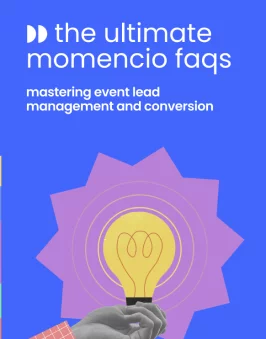
Post-Show Strategy
17. How Will You Follow Up with Leads?
Adequate follow-up is crucial to converting trade show leads into customers. The key is to act quickly and personalize your communication to maintain the momentum of the show. Here are strategies to enhance your follow-up process:
- Immediate Thank You Messages: Send a personalized thank-you email within 24 hours of meeting each lead. This can include a recap of the conversation, additional information about products or services they expressed interest in, and a call to action, such as scheduling a more detailed follow-up meeting.
- Segmented Follow-Up Campaigns: Segment your leads based on their interests, behavior at the booth, and readiness to buy. Tailor your follow-up messages accordingly to address their specific needs and how your solutions can benefit them.
- Content Delivery: Provide valuable content that was promised during the trade show, such as whitepapers, case studies, or product demos. This not only reinforces the lead’s engagement but also positions your brand as a resourceful industry leader.
18. What Metrics Will You Use to Measure Success?
To evaluate the effectiveness of your trade show participation and follow-up strategies, define clear metrics for success. These can include:
- Lead Conversion Rate: The percentage of leads that convert into customers is a direct measure of the success of your follow-up strategies.
- Time to Conversion: Monitor how long it takes for a trade show lead to become a customer. Speedier conversions can indicate more effective follow-up.
- ROI of the Trade Show: Calculate the overall return on investment by comparing the revenue generated from trade show leads against the cost of participating in the event.
- Engagement Metrics: Assess the level of engagement in your follow-up campaigns, including open rates for emails, download rates for content, and attendance at scheduled follow-up calls or demos.
Leveraging Automation and CRM Integration
To streamline the follow-up process and ensure no lead is neglected, utilize automation tools and CRM integration:
- Automated Nurturing Campaigns: Set up automated email sequences that nurture leads down the sales funnel, providing them with relevant information at each stage of their buyer’s journey.
- CRM Integration: Ensure that all lead data captured at the trade show is integrated into your CRM system. This allows for better tracking of interactions and more personalized follow-up communications.
- Feedback and Refinement: Gather input from leads about their post-trade show experience with your brand. Use this information to refine your approach for future events.
Building Long-Term Relationships
Lastly, consider the long-term potential of each lead. Not all leads will convert immediately, but they might do so in the future. Keep them engaged with ongoing communication and updates about your products and services. Inviting them to webinars, sending them industry news, and periodically checking in can keep your brand on top of their mind.
Here are the 20 Essential Questions to Ask Before Exhibiting at a Trade Show
- Why are you exhibiting at this trade show?
- What specific goals do you aim to achieve by participating?
- Who are the attendees, and what are their profiles?
- How can you tailor your booth and presentations to engage these specific attendees?
- What are your competitors at the show, and what can you learn from them?
- Where is your booth located, and why is this location strategic?
- How should your booth be designed to attract and engage visitors?
- What is your total budget for the trade show?
- How will you allocate resources to different needs (e.g., design, marketing, technology)?
- What marketing materials and promotional items will you need?
- How will you promote your presence before and during the show?
- Who will staff your booth, and what roles will they play?
- What training will your team need to represent your brand and engage with attendees effectively?
- What technology will you incorporate to enhance engagement and lead capture?
- How will tools like momencio streamline your lead management process?
- What is your strategy for following up with leads after the show?
- What metrics will you use to measure the success of your participation?
- How will you ensure that the leads are effectively nurtured post-show?
- What long-term strategies will you employ to maintain engagement with leads?
- How will you gather feedback on your trade show performance and use this information to improve future exhibitions?
FAQs
- What are the main benefits of exhibiting at a trade show?
- Exhibiting at a trade show offers direct face-to-face engagement with potential clients and partners, opportunities for market research, brand exposure, and a chance to evaluate competition.
- How early should I start planning for a trade show?
- It’s advisable to start planning at least 6-12 months, depending on the scale of the event and the complexity of your exhibit.
- What are the critical components of an effective trade show booth design?
- How can I measure the success of my trade show exhibit?
- What types of promotional materials work best at trade shows?
- High-quality brochures, product datasheets, branded giveaways, and interactive digital content tend to attract and engage visitors effectively.
- How do I choose the right staff for my trade show booth?
- Choose staff who are not only knowledgeable about your products and industry but are also charismatic, approachable, and skilled in sales and customer interaction.
- What is the best way to follow up with leads after the trade show?
- Quick, personalized follow-up messages that recap your conversation at the show and suggest next steps, such as a meeting or product demo, are practical.
- How can technology enhance my trade show experience?
- Technology like virtual reality demos, mobile apps for lead capture, and digital displays can enhance visitor engagement and streamline operations.
- What should I do if the trade show doesn’t meet my expectations?
- Analyze what went wrong, gather feedback, and identify areas for improvement. Consider trying different strategies, booth designs, or even different trade shows that better target your desired audience.
- Are there ways to participate in a trade show without a booth?
- Yes, you can attend as a visitor to network and learn, participate in panel discussions or speaking opportunities, or leverage sponsorship opportunities to gain visibility without a booth.
Interesting Facts Before Exhibiting at a Tradeshow from Research
- Economic Impact: Trade shows annually contribute over $100 billion to the U.S. economy, showcasing their significant role in business networking and sales strategies.
- Lead Conversion: According to Exhibit Surveys, Inc., 83% of attendees have some buying power, meaning that the majority are potential customers capable of making purchase decisions.
- Global Reach: The Global Association of the Exhibition Industry reports that there are approximately 32,000 exhibitions each year worldwide, attracting more than 303 million visitors.
- Digital Integration: A study by CEIR found that 48% of exhibitors are looking to increase their use of digital marketing in their exhibit programs, reflecting the growing importance of integrating technology into traditional trade show strategies.
- Sustainability Trends: More than 60% of trade show organizers are working on initiatives to make their events more sustainable, including waste reduction, digital materials, and energy-efficient technologies.
Conclusion
Exhibiting at a trade show is a powerful strategy that allows businesses to connect directly with a large, engaged audience, demonstrate their product or service in real-time, and build lasting relationships that go beyond digital interactions. Before exhibiting at a tradeshow, by carefully planning your trade show participation—from booth design to post-show follow-up—you can maximize your investment and significantly boost your marketing and sales outcomes. The key is in detailed preparation, strategic execution, and diligent follow-up, ensuring that every lead is captured and nurtured effectively.
Are you ready to elevate your trade show success? Discover how momencio can revolutionize your event experience with our advanced lead capture and follow-up solutions. Take advantage of the opportunity to transform every lead into a potential business opportunity.
